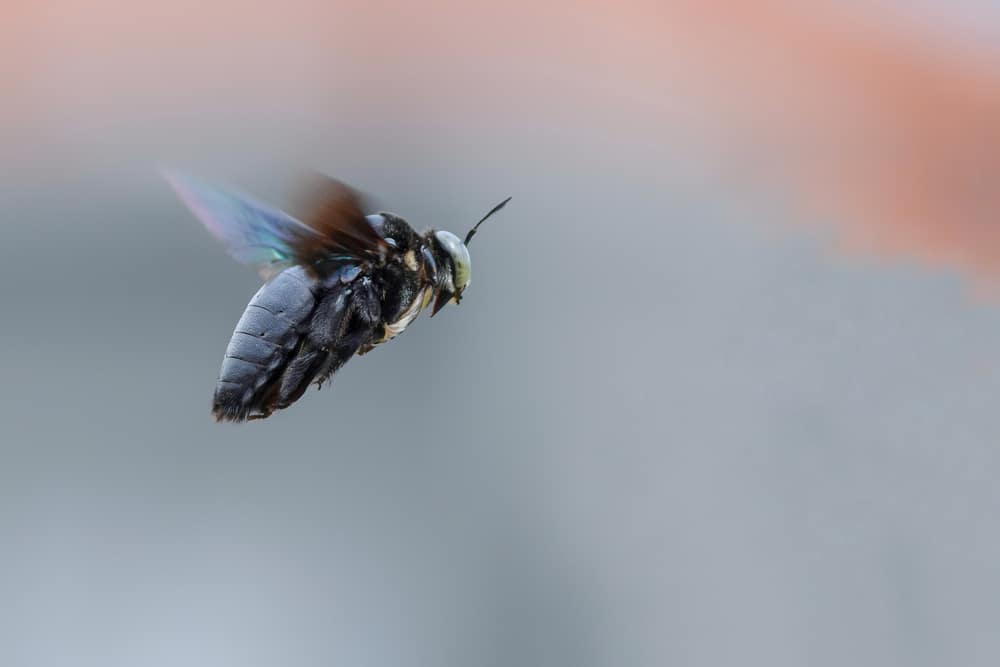When it comes to pest problems, no one wants to see an infestation of any type. However, some are worse than others. Most people dread the idea of a bed bug infestation or a roach infestation. Though they worry about them, they don’t always recognize these bugs.
Did you recently notice a spate of small, flying insects in your home? This may be a number of different critters. Before you panic, let’s take a closer look at what this could be and how to handle it.
What could Those Tiny Flying Beetles in Your Home be?
If you are worried about beetles, the first step to making things better is figuring out what kind of beetles are buzzing around your home. Here’s the scoop on the most common ones and how to get rid of them.
1. Click beetles
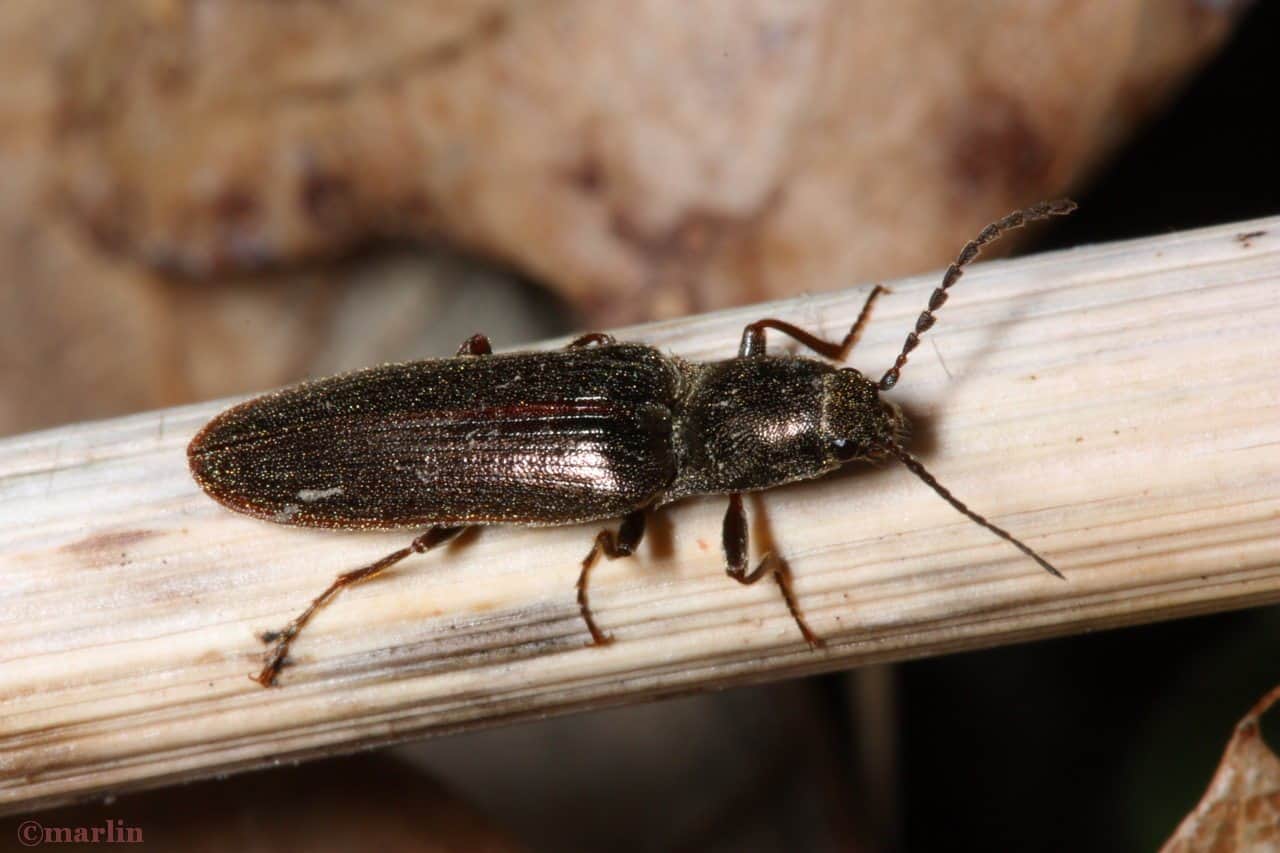
Credit: cirrusimage
Click beetles are harmless because they don’t lay eggs in your home and don’t try to eat any stored food. They have long, skinny, black bodies that don’t really look very beetle-like. They often get in by accident from gardens, where they typically eat vegetables.
Most of the time, these beetles mean no harm. They’re there by accident and are generally more interested in your garden’s veggies than they are in staying indoors.
How to get rid of them:
To get rid of click beetles, simply place them outside. They don’t like being indoors and won’t come back. If you need to get rid of click beetles in your garden, the easiest way to do it is to use traps or to spritz the area with some deterrents. (But, that’s another story.)
2. Carpet beetles
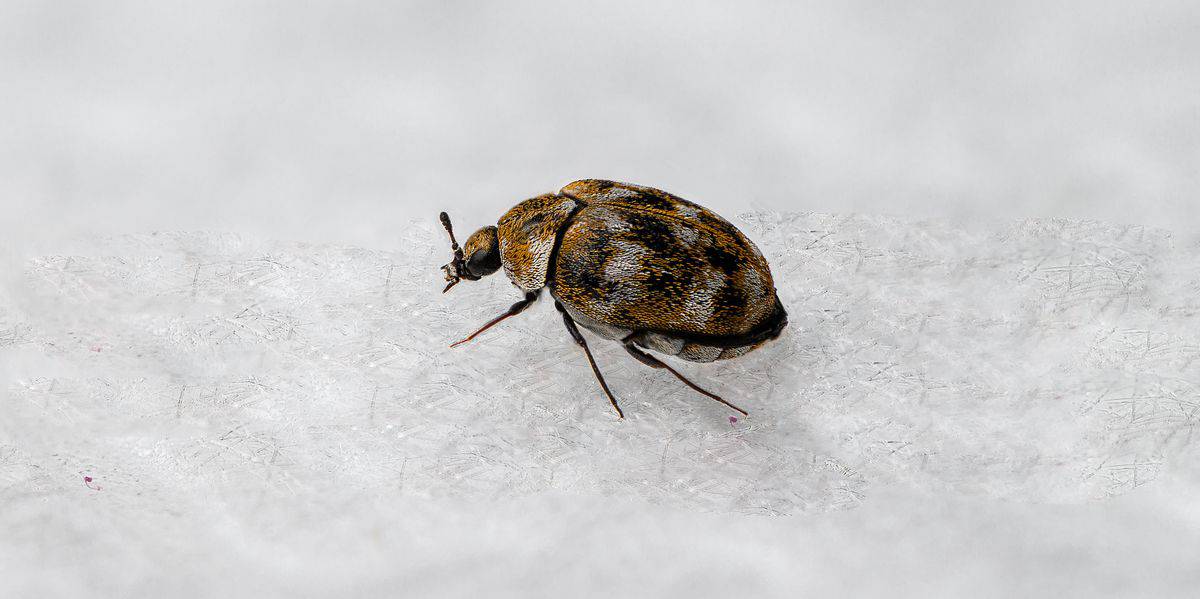
Credit: countryliving
Carpet beetles are not like click beetles. Rather, they tend to be the beetles that people dread having in their homes, primarily because they can be very difficult to get rid of. Carpet beetles have rounder bodies and are frequently easy to spot on carpets, beds, and fabrics.
In most cases, carpet beetles make themselves known by laying eggs in your carpets. Carpet beetle larvae often look like little worms, while the adult beetles tend to be rounder. If you see these round beetles near your bed or your home, you got a problem.
Along with being unsightly, carpet beetles can eat away at fabrics like linen, leather, furs, wool, silk, and even cotton. This can lead to a lot of painful purchases you have to cover. If you find these, get rid of them as soon as possible.
How to get rid of them:
Getting rid of them can be difficult. Your best bet is to vacuum all your carpets and bedding, sprinkle diatomaceous earth on the floor, and to lock up any fabrics made of animal products in plastic cases. If things get worse, we suggest calling a pest control company.
3. Pharmacy beetles/Drugstore beetles
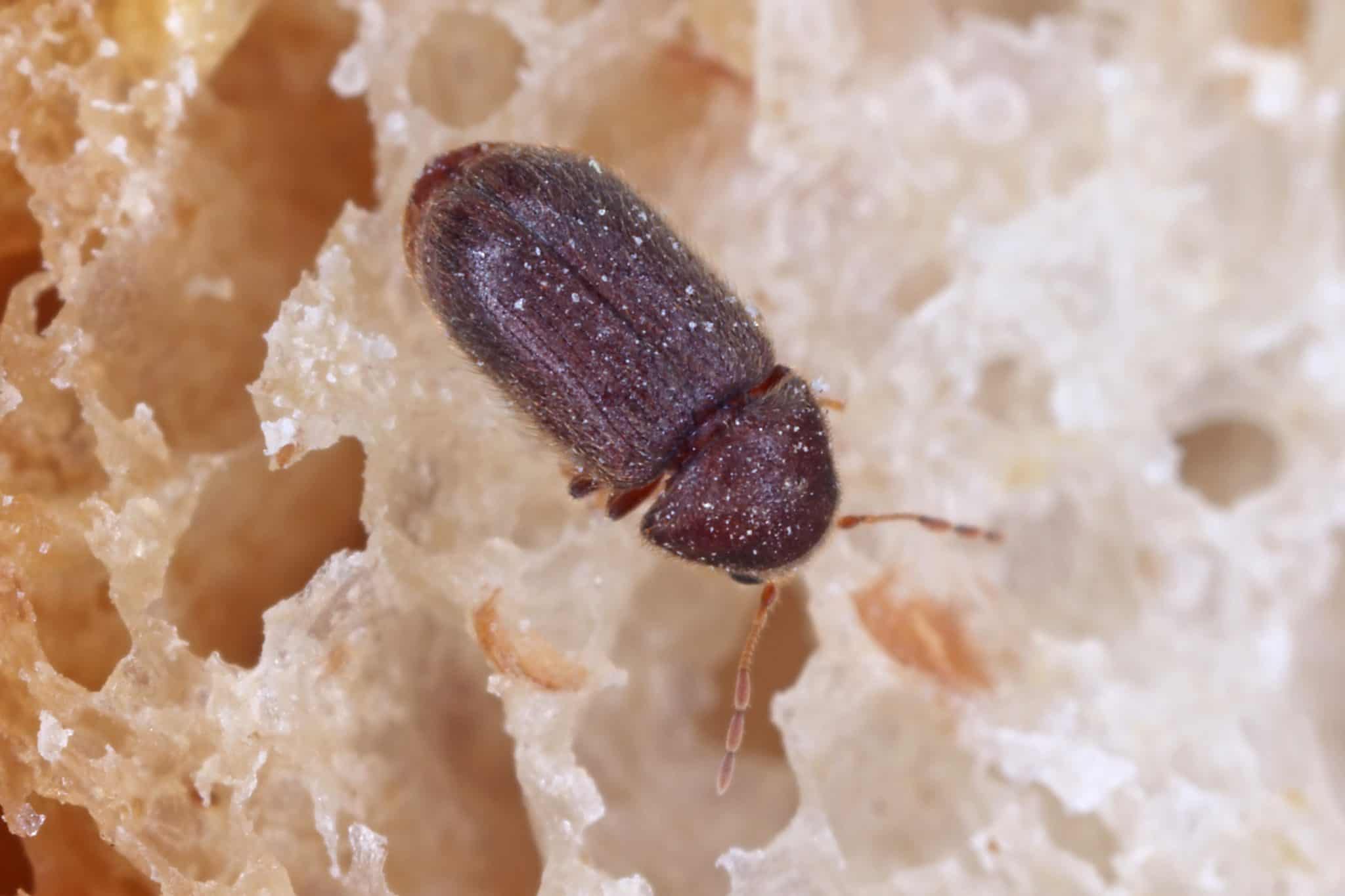
Credit: aces.edu
Drugstore beetles are often mistaken for drain flies, fruit flies, or flying ants, but they are neither. They are their own species and they tend to be major pets. These beetles, also known as biscuit beetles, are there to eat your food.
Drugstore beetles are known for eating anything that has grains, including cereals, breads, or even candies. As long as it’s edible, they’ll probably eat it. They will also chew holes in boxes containing food and bore through fruits left on a counter.
Of course, drugstore beetles don’t just eat foods. They will also eat wool, hair, book binding glue, and even spices that would normally drive away other pests. They also multiply fairly quickly, which is why reducing their population is a must.
How to get rid of them:
Pharmacy beetles can be a major sign of problems with food storage. To combat them, the easiest thing to do is the following protocol:
- Vacuum and clean your kitchen and pantries thoroughly. This will get most of the eggs and bugs out of your kitchen, but that doesn’t mean that you’re done. You need to make sure that your area is not attractive to them.
- Lock away any food items and animal products they could possibly eat in metal, glass, or plastic bins. This includes leather books, flour, bread, cereals, and cotton. The less access they have to food, the better. Seal it away.
- Sprinkle diatomaceous earth or a similar pesticide around the cracks of your floor and cabinets. This will kill them without harming your food storage. Make sure to vacuum those crevices beforehand so that they don’t end up eating crumbs behind there too.
- Consider setting up traps underneath your oven and other areas. These can help ensure that you don’t have to deal with multiple rounds of these critters.
- Sanitize food storage areas, even if you’ve already put items in storage.
4. Cockroaches
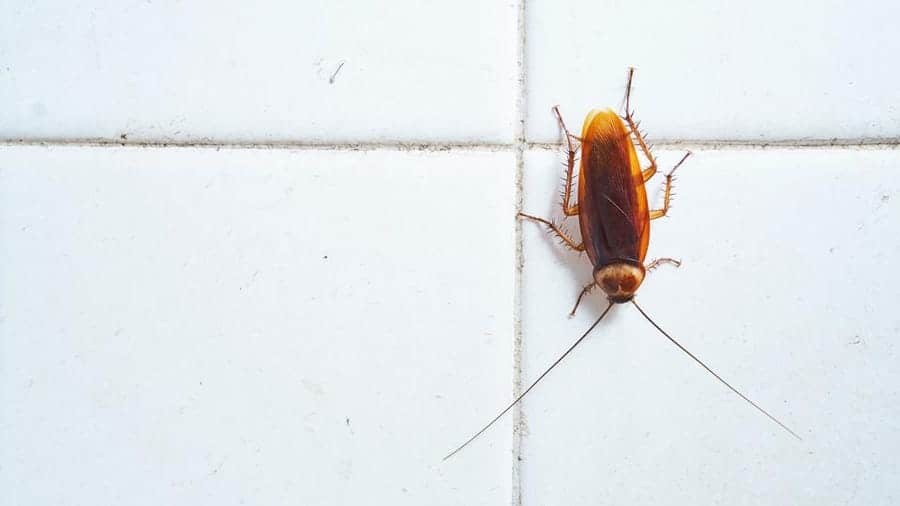
Credit: forbes
It’s true, roaches are technically not beetles but they do look like brown beetles enough to make a typical person question it. Cockroaches can fly, and adults tend to be between 1 to 2 inches in length with long antennae.
Like pharmacy beetles, cockroaches are there to eat your food. They are carriers of disease and can cause noticeable damage to your home. Simply put, this is a sanitation issue that you need to address as soon as possible.
By the time you have seen a cockroach in your home, you already have an infestation. This means you have to act as soon as you possibly can, and that you should act hard.
How to get rid of them:
The best way to get rid of roaches is to call an exterminator and do regular treatments for them once you see them. If you have an extreme problem, then you really need to get a pro. However, if you can’t afford a pro, you can do the following:
- Remove any food containers and food left out on the open. Seal it in plastic containers. Give your home the cleaning of a lifetime and remove any crumbs you can find near the fridge, stove, or corners.
- Sprinkle diatomaceous earth around every crevice of your home. This will help kill them by dessicating them. Eventually, it will act as a barrier against them because it kills after several days.
- Remove as much moisture as you can from your home environment. Roaches and many other pests tend to love damp areas. Fixing leaks, getting a dehumidifier, and also plugging drains can help immensely.
- Lay out roach traps underneath the fridge and near corners of the room. A large part of this type of extermination is to make sure that all the roaches are dead. Otherwise, they’ll keep coming back.
- Use roach foggers for bigger messes. This is one of the few things that can actually work. The same can be said of specialized roach sprays.
- Continue to be vigilant about sanitation. You may also want to seal up windows and doors, since roaches often travel from apartment to apartment. Keeping areas near pipes sealed up can help too.
5. Powderpost beetles
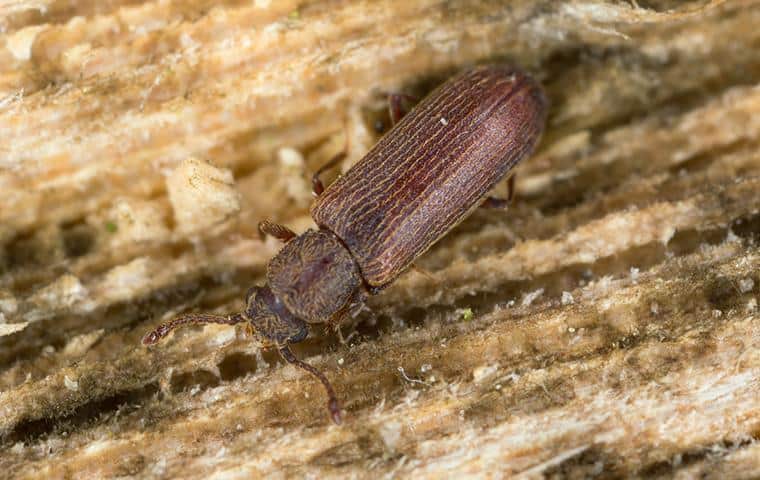
Credit: accuratepestsolutions
Powderpost beetles are long, thin beetles that generally don’t fly much. However, they do love to congregate on wooden furniture and walls. Their favorite thing to do is bore holes in wood, since they eat wood and nest in wood.
Though rare, they often get mistaken click beetles. The difference here is that powderpost beetles tend to show up in larger quantities and they tend to be less likely to fly around.
How to get rid of them:
Unfortunately, you will have to get any wooden items affected by these beetles professionally treated or removed. More importantly, you need to add a protective coating to your existing wood.
An ounce of prevention is worth a pound of cure with these beetles. You want to avoid them ever taking hold in your home. The easiest way to do this is to regularly add protective wood coating and polish to your home’s exterior and furniture. Dull furniture is dangerous furniture.
When should you call an exterminator?
Technically, all pests can be removed by your own means if you are thorough enough. However, if your efforts haven’t paid off, if you have a roach problem, or if you have a carpet beetle problem, it is usually better to call in a professional.
In conclusion…
Those tiny flying beetles you see could be a wide range of different creatures dependingg on where you find them, what they’re doing, and what they look like. In most cases, you’re seeing carpet beetles, pharmacy beetles, or cockroaches.
For the most part, the best way to make sure you don’t have a beetle problem is to use DE and to sanitize your kitchen. When in doubt, lock up your food sources and keep an eye out for any items that could be infected. Removal is your number one best ally in this fight.
